How To Get Rid Of Dark Spots: Beauty Editor's Must-Try Tips
If dark spots and pigmentation are getting in the way of you having crystal clear skin, here are some ways to get rid of them
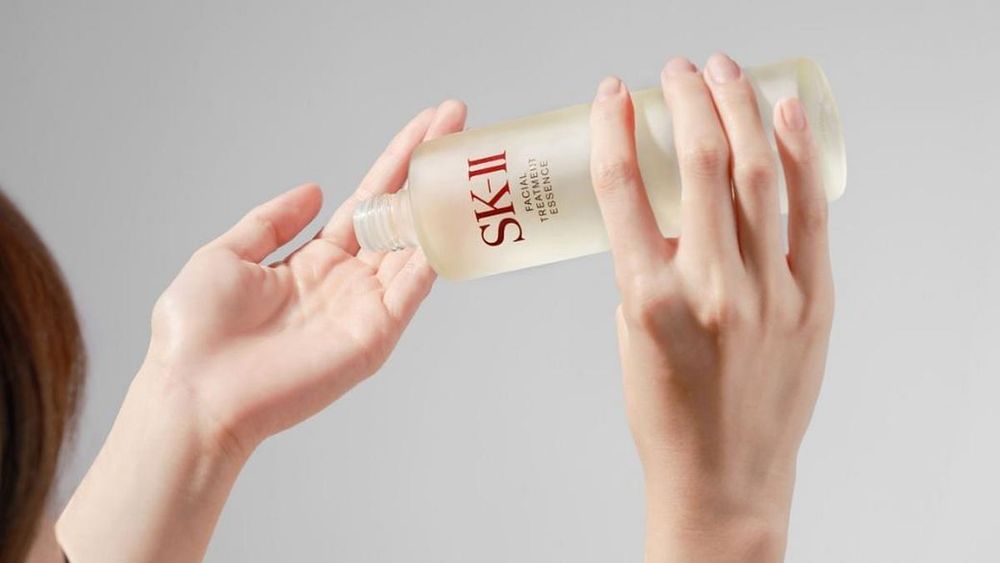
Asians are genetically predisposed to having pigmentation problems. This is because we have a thicker dermis layer and more melanin-producing cells that are sensitive to inflammation and UV damage.
The good news is, it won't be permanent.
Types and Causes of Dark Spots
Age spots, melasma, and post-inflammatory hyperpigmentation are just some examples of dark spots, and there are a number of reasons why they form. These can include sun damage, ageing, hormonal changes and inflammation.
The most common cause of pigmentation is exposure to the sun’s UV rays, which triggers skin natural response to produce a dark pigmentation melanin to protect your skin from harmful UV rays. Excessive sun exposure, however, can disrupt this process, leading to hyperpigmentation and in some cases, further exacerbate dark spots by making them even darker.
As we age, the metabolism of our skin changes and that can manifest in the form of dark spots or age spots. Genetics also plays a part in the development of age spots—if your parents had them, there is a higher chance of you developing them as well. A common misconception with dark spots is that they fade away with time when, unfortunately, they get darker with time and age.
Hormonal influences such as pregnancy and birth control pills can also cause dark spots, known as melasma or chloasma. These dark spots or patches are most commonly seen in women because an imbalance in the amount of estrogen and progesterone can end up stimulating the overproduction of melanin. Sometimes referred to as “the mask of pregnancy”—as it affects pregnant women—this imbalance in hormones can result in dark and irregularly shaped patches on the face or arms.
When skin undergoes trauma in the form of wounds, it triggers an inflammatory response, producing excess melanin which darkens the skin as a result. For individuals suffering from acne, eczema, allergic reactions or other skin conditions, they are more likely to face this issue of dark spots and patches. Post-inflammatory hyperpigmentation is especially common after breakouts due to the constant cycle of inflammation responses.
Here are some of the best methods to get rid of dark spots quickly and easily.
Lifestyle Remedies to Get Rid of Dark Spots
To prevent dark spots, it is important to have an effective and proper skincare routine in place. It is pertinent that you include adequate UV protection and moisturise regularly to prevent the appearance of dark spots and pigmentation.
In sunny Singapore, we need to be extra mindful of the sun’s UV rays, taking care to apply sunscreen even when indoors or on a cloudy day as UV rays are able to penetrate through clouds and windows. Sun exposure can also exacerbate post-inflammatory hyperpigmentation, resulting in the darkening of existing dark spots.
Sunscreen
Include a good broad-spectrum sunscreen with a minimum SPF 30 PA++ rating into your daily skincare routine, adjusting the SPF and PA rating accordingly if you expect to spend more time outdoors. While many people are already mindful of daily sunscreen application, it's just as important to reapply sunscreen as it photo-degrades over time. What this means is you start losing UV protection the moment you are exposed to the sun. We recommend reapplying every two hours for consistent protection, and even more frequently when you're outdoors or doing water sports.
Physical Protection
Whenever possible, minimise UV exposure by staying out of the sun—this means staying in the shade, wearing a hat or using an umbrella. For those who spend hours or days in the sun during work or pursuing hobbies, invest in good quality UPF (Ultraviolet Protection Factor) clothing. Coupled with sunscreen, the additional layer of UPF will ensure that you are well protected from harmful UV rays.
Maintain Healthy Skin Barrier
Skin is the biggest organ of our body and its main function is protection from external aggressors. Proper hydration ensures healthy skin barrier functions, lowering the occurrence of inflammation responses, thus reducing the formation of dark spots. Opt for hydrating toners, creams and lotion in your skincare routine to keep skin in optimum condition.
Home Remedies for Dark Spot Removal
Let us preface by saying that DIY home remedies are generally not recommended, especially if you're inexperienced or have sensitive skin. That's because the concentration of active ingredients in DIY beauty products can vary. For instance, the amount of vitamin C in a lemon (which we do not recommend putting on your face, ever), can vary from fruit to fruit.
While there is a green movement surrounding clean beauty, skincare products are formulated by laboratories to ensure efficacy, consistency and most importantly, safety—before they are available for purchase. DIY remedies may save you a buck or two, but are highly inconsistent in terms of results and in worst-case scenarios, they can potentially cause skin irritation or even burns.
The Best Skincare Ingredients For Dark Spot Removal
Skincare formulated specifically for dark spots is your best bet at minimising their appearance as the active ingredients work to break down or prevent the formation of melanin—the pigment responsible for dark spots.
Galactomyces
This ingredient is a ferment filtrate ingredient that was first discovered in a sake brewery. If this story sounds familiar, that's because this discovery eventually led to the formulation of SK-II's proprietary PITERA™.
Galactomyces offer many benefits—hydration, controlling sebum production, minimising the appearance of pores and brightening dull and lacklustre skin. They also contain loads of vitamins and antioxidants to help skin barrier remain healthy and delay the signs of ageing. A study on galactomyces concluded that it was able to reduce the appearance of pigmentation and dampen oxidative stress on skin.
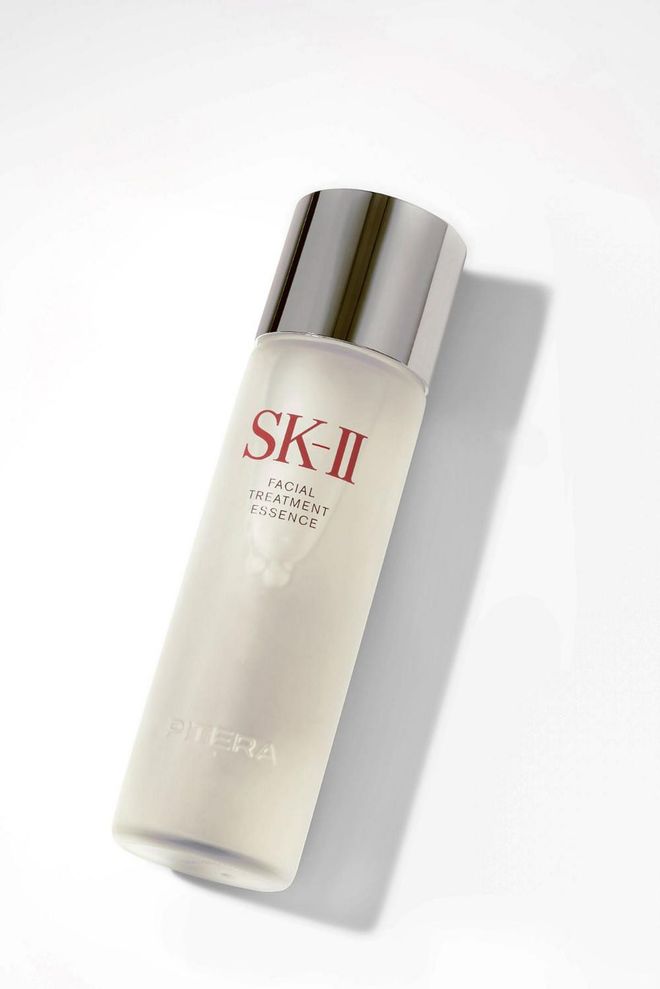
Facial Treatment Essence, $289 for 230ml, SK-II
SK-II's Facial Treatment Essence is formulated with PITERA™ —the galactomyces ferment filtrate—and this clear fluid contains micronutrients and is packed with peptides, proteins, amino acids, carbohydrates, and organic acids to support skin's health and boost its natural radiance.
Antioxidants
Remember when your parents made you take vitamins to maintain good health? Vitamins C and E are actually antioxidants that help your body and skin in several ways.
Free radicals exist in pollution, smog, cigarette smoke, and are also produced as a by-product of our body's natural metabolic functions. Unfortunately, free radicals are also highly unstable as they have a missing electron. In a bid to stabilise themselves, these free radicals will "rob" cells of their electrons, damaging them in a process called oxidation.
How does this play into pigmentation, you ask? As skin cells are damaged by free radicals, the skin might become sensitive and inflammed during this process. Inflammation can trigger melanocytes to produce more pigments, resulting in darker skin.

GenOptics Aura Essence, $299 for 50ml, SK-II
What antioxidants do (which you probably have figured out by now from its name) is they readily give up their electrons so that free radicals are able to stabilise without affecting cells in the process.
Use a serum like SK-II’s GenOptics Aura Essence, which is high in antioxidants, amino acids, minerals and vitamins to help your skin defend itself against free radical damage. It contains plum extract to quell dullness while brightening your skin, as well as D-Melano P3C™, a proprietary formula from SK-II that helps suppress the production of melanin. This lightweight serum also contains SK-II’s signature ingredient PITERA™ to improve skin radiance and maintain cell turnover rate.
Alpha-Hydroxy Acids
Alpha-hydroxy acids or AHAs is an umbrella term given to a group of acids such as citric, glycolic, lactic and malic acid. If you see any of these acids in the products you're using, know that you're including AHAs into your skincare routine.
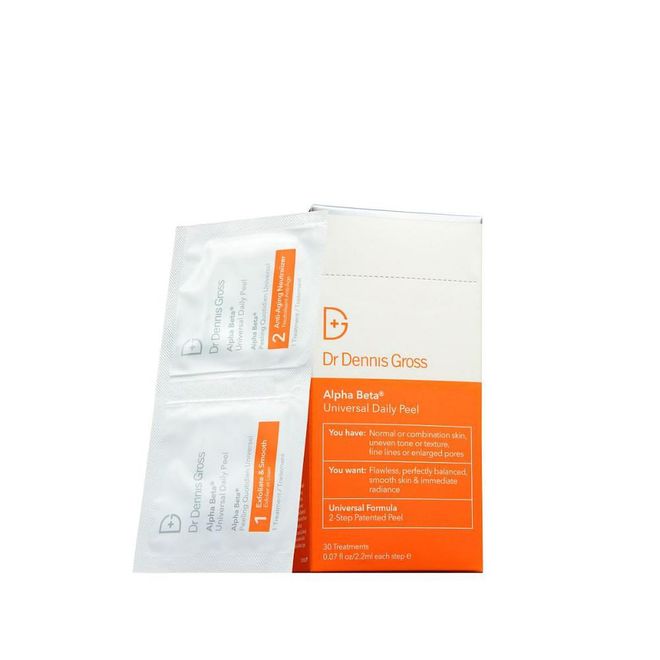
Alpha Beta Universal Daily Peel, $135 for 30 applications, Dr. Dennis Gross Skincare
As part of skin's natural renewal and turnover, dead skin cells will shed on their own but there are instances where they do get stuck on the surface. This can lead to dullness and in some cases even clog up pores and cause pimples. Exfoliation can help mitigate this problem, but physical scrubs can cause micro tears to the skin. Plus, the micro beads in some facial scrubs can also pollute the environment.
Chemical exfoliators like AHAs work in a different way. They help dislodge the "glue" that holds the skin and facilitate the renewal process. Over time, the use of AHAs can make your complexion appear more radiant and even in tone.
The Alpha Beta Universal Daily Peel contains both AHAs and BHAs to gently exfoliate skin and is known as the gold standard for at-home chemical peels.
Retinols
Retinol is a vitamin A derivative that boosts collagen production and improve skin cell turnover. You may have also heard of the terms retinoid and Retin-A. Retinoid is a blanket term that includes both over-the-counter retinol items, as well as prescription-strength retinoic acids like Trentinoin and Tazarotene.
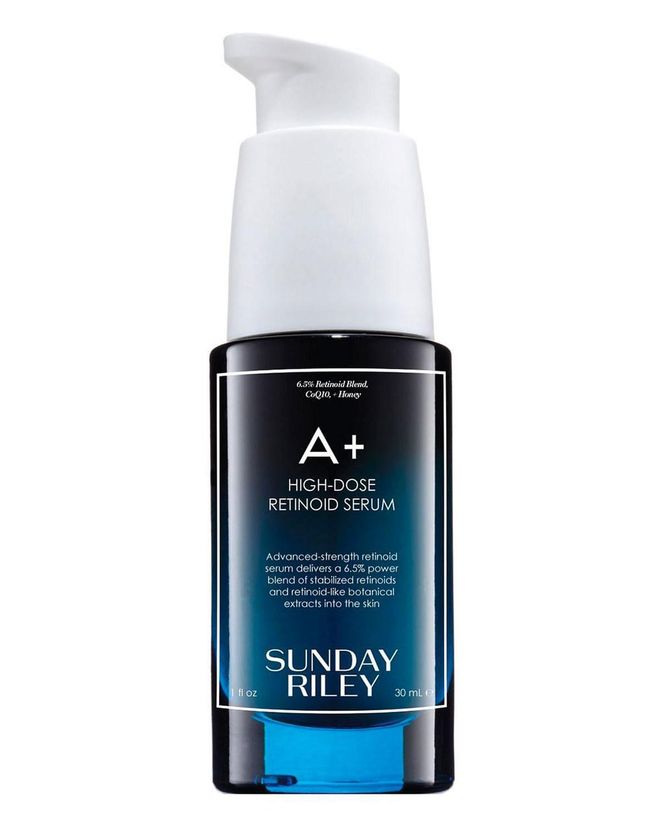
A+ High-Dose Retinoid Serum, $128, Sunday Riley
While prescription-strength retinoids are definitely stronger than what you can get in stores, the difference lies not just in the benefits but also how long it takes to give you clearer skin. With retinol skincare products, you'll still reap the rewards of having a smoother complexion, it just takes longer to get there.
Sunday Riley's A+ High-Dose Retinoid Serum contains 6.5 percent blend of stabilised retinoid blends and botanical, retinol-alternative extracts to help reduce the appearance of pigmentation and improve skin texture and firmness over time.
Niacinamide
Niacinamide, also known as vitamin B3 and nicotinamide, is a water-soluble vitamin that is well-loved for its ability to improve collagen production, reduce moisture loss, minimise the appearance of pores and dark spots caused by sun exposure.
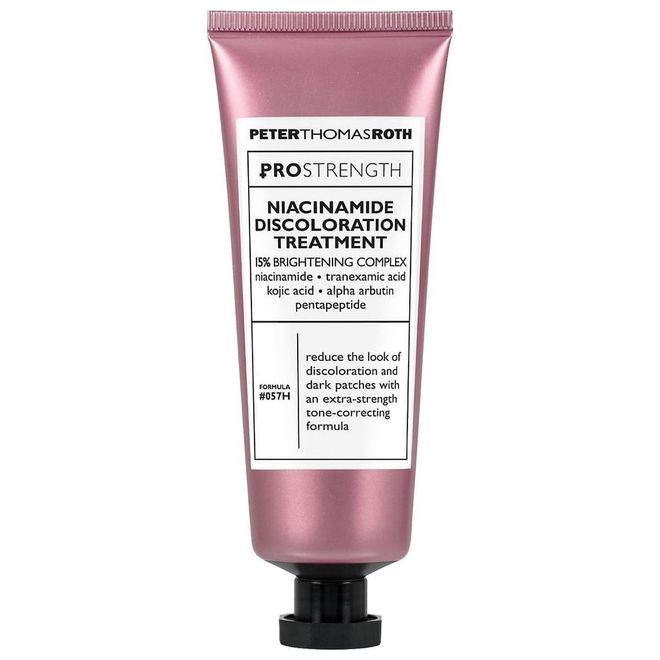
Pro Strength Niacinamide Discoloration Treatment, $135 for 50ml, Peter Thomas Roth
Besides a host of skin benefits, Niacinamide plays well with other active ingredients such as retinol, AHAs, BHAs and vitamin C, and is suitable for most skin types. If you're new to the ingredient, start off with a lower percentage of niacinamide, especially if you have sensitive skin, and slowly work your way up to experience its dark spot reduction benefits.
Peter Thomas Roth’s Pro Strength Niacinamide Discoloration Treatment is powered by a 15 per cent Active Brightening Complex that includes niacinamide, tranexamic acid, kojic acid, alpha arbutin, and pentapeptide. It works to reduce the look of dark patches, post-blemish marks, and uneven skin tone caused by sun damage and ageing.
Alpha-arbutin
Arbutin is a natural derivative of hydroquinone and is used as a topical skin brightening agent for treating dark spots. It works by inhibiting tyrosinase, a key enzyme in producing skin pigment melanin.

Pure Revival Peel, $76 for 60ml, Skin Inc
Suitable for all skin types, arbutin improves the appearance of uneven complexion and can help get rid of dark spots. Skin Inc’s Pure Revival Peel combines AC-11, Arbutin and Fullerene, which work to gently exfoliate old keratin and impurities, revealing bright, renewed skin. Skin texture is also refined and lightening the appearance of dark spots to improve skin's overall radiance.
In-Clinic Treatments for Dark Spot Removal
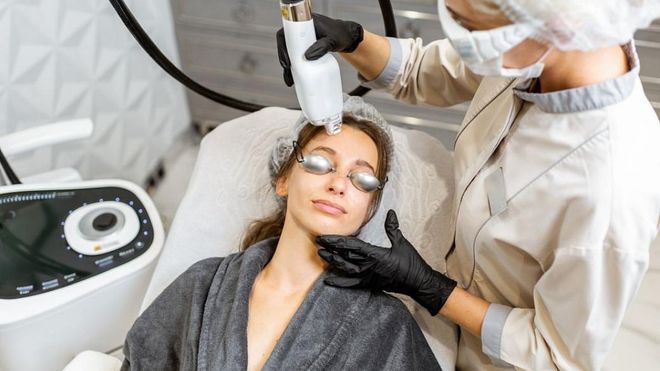
In-clinic treatments like lasers and chemical peels can help reduce the appearance of persistent dark spots
If you haven't been religious in your sunscreen application or you've been spending a lot of time outdoors, your pigmentation problems will be more severe. This is where in-clinic treatments come in. Lasers and chemical peels administered by a doctor are highly effective at getting rid of darker and more persistent pigmentations. These treatments may be more effective at tackling pigmentation, but they also cost more than over-the-counter skincare products. Some treatments also have a down time and if you have a low tolerance for pain, you might want to think hard before making an appointment with your doctor.
Quadrostar Pro Yellow Laser
The Pro Yellow Laser has a wavelength of 577nm and is effective at treating pigmentation, rosacea, red acne marks, as well as uneven skin tone. As the laser also tackles redness, there is also less likelihood of post-inflammatory hyperpigmentation. You may also experience the dark spots scabbing before they eventually shed through skin's natural renewal processes.
Pico Laser
Pico Lasers fire ultrashort picosecond laser pulses, hence its name. It operates at a wavelength of 1064nm, and at this rate, the pigmentation is broken up into smaller fragments, which are then removed through natural bodily functions. Some numbing may be required based on each individual's threshold for pain, but generally, the treatment feels like tiny pricks on the skin depending on the strength of laser used. The downtime also varies from person to person, with some experiencing redness immediately post-treatment or some darkening of existing pigmentation that will fade off over time.
In-Clinic Chemical Peels
In-clinic chemical peels also use AHAs found in skincare but at a much higher concentration. These should only be administered by a trained doctor as there's a risk of irritation or burning when not done right. The idea is the same as your at-home peels—the AHAs help with skin cell renewal, allowing old skin to dislodge and fall off, revealing brighter skin. Depending on the strength used, you may experience a stinging sensation during the treatment, as well as redness and peeling post-treatment.
Whether you choose at-home skincare products or in-clinic treatments, it's important to do your research to find out how each of these methods can help target dark spots and pigmentation effectively. Keep a look out for ingredients the next time you shop for skincare or make an appointment with your aesthetic doctor to share about your skin concerns so that he or she can recommend a treatment that best addresses them while taking your lifestyle and pain threshold into consideration. Do also check out the comprehensive guide to protecting your face from dark spots with SK-II!